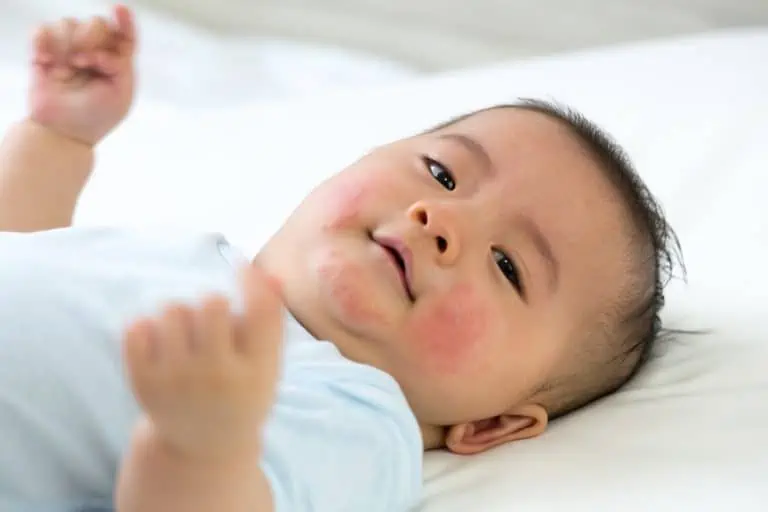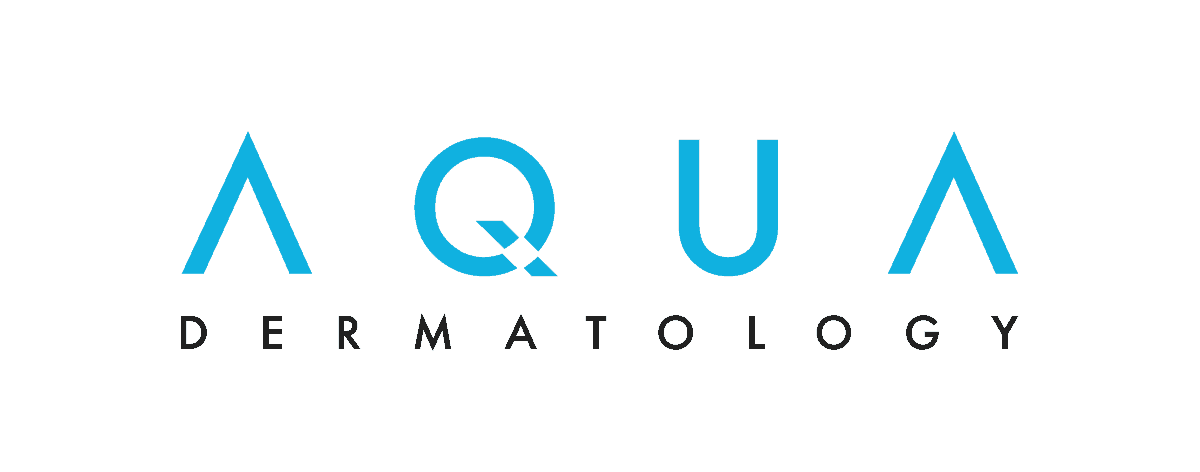Baby Eczema: What to Know About Causes, Symptoms and Treatment

A baby’s skin is velvety soft and ever so delicate, but as many new parents discover, it’s not always picture perfect. In fact, babies can experience a number of skin conditions, ranging from whitish bumps called milia to baby “acne” to infantile eczema, aka baby eczema. Eczema in babies can be so uncomfortable that it keeps the baby, and the parents, awake at night.
“Eczema can be exceedingly itchy,” said Robin Gehris, MD, a board certified adult and pediatric dermatologist at Riverchase Dermatology. You may catch your baby scratching the dry, itchy patches against their mattress, carpets and objects such as toys to get relief.
“Babies with eczema can easily scratch themselves until they bleed,” said Dr. Gehris. “Scratching is what brings out the rash.” It also creates breaks in the skin that provide easy entry for germs.
Read on to learn the signs and symptoms of eczema (also called atopic dermatitis) and how to treat baby eczema. Even if your child’s eczema is mild, it’s important to address it early to keep your baby comfortable, lower the risk of skin infections and prevent the condition from getting worse. As baby eczema progresses, it becomes harder to treat.
What does baby eczema look like?
Baby eczema causes dry, rough or scaly patches that can appear on any part of the body but often occur on the face, especially the cheeks, and the scalp. When scratching causes a rash, the rash is typically red and easy to see in babies with light skin. In babies with dark skin, it may be pink or a subtle gray-brown to violet-brown.
“In some cases, eczema in babies with dark skin can be easy to miss, which can delay the diagnosis,” said Dr. Gehris.
Blisters that ooze a straw-colored or clear liquid sometimes appear. Once the liquid leaks out, the rash may crust over. The rash site may develop a bacterial or viral infection if left untreated.
Baby eczema symptoms typically appear during the first three to six months of life. They may come and go for no obvious reason.
What causes eczema in babies?
The causes of baby eczema aren’t well understood, but certain genetic factors make some people more susceptible to it. One genetic factor is a mutation in the filaggrin gene. This mutation weakens the skin barrier, the outer layer of skin that locks in moisture and keeps germs out. Other gene mutations cause the immune system to overreact to common substances. If eczema, hay fever or food allergies run in your family, your baby has a higher chance of developing eczema.
Living in a city or a cold, damp climate increases the risk of baby eczema, as does frequent exposure to tobacco smoke and pollution.
Some parents worry that their baby developed eczema because they bottle feed instead of breastfeed, but bottle feeding does not cause eczema. That said, some evidence suggests that breastfeeding may reduce the risk.
Can a food allergy cause eczema?
Many parents have questions about foods that cause eczema in babies, but diet isn’t usually a direct cause of eczema. Babies who have eczema do have a slightly higher risk of food allergies, however.
“Understandably, parents often hope to find a single cause for their baby’s eczema so, they’ll perform food elimination trials to see if that helps,” said Dr. Gehris. “The American Academy of Pediatrics does not recommend random dietary elimination, however.”
“I typically advise parents to eliminate a single food only if they notice that their child’s eczema flares after eating it or if the child has had a severe reaction, such as hives or wheezing, to that food. In those cases, it can be helpful to seek the opinion of an allergist.”
Having your child undergo broad food allergy testing to see if they might have food allergies, without evidence that they react to specific foods, is not recommended. Food allergy tests can be subject to false positives, which means they can find a food allergy that isn’t there. You could end up cutting out a good-for-you food that is fine for your child to eat.
Baby eczema treatment
There’s no single, one-time cure for eczema, but there are plenty of ways to reduce flares, protect against infections and make the baby more comfortable.
Trigger avoidance
A host of irritants and allergens can cause an eczema flare. These include:
- Dry air
- Tobacco smoke
- Pet dander, dust, pollen, foods and other allergens if your baby is allergic
- Fragrances in soap, laundry detergent and fabric softener
- Baby powder
- Baby wipes
- Wool and other scratchy fabrics
- Heat and sweat
- Saliva (from drooling)
Baby eczema creams
Baby eczema creams, lotions and ointments help ease symptoms and soothe and protect the skin. Creams and ointments are thicker and may be more effective than lotions, but don’t use an ointment if the rash is weeping. Avoid moisturizers that contain fragrance.
Good choices include:
- CeraVe or CeraVe Baby Moisturizing Cream
- Cetaphil Moisturizing Cream
- Aquaphor Baby Healing Ointment
- Aveeno Baby Eczema Therapy Moisturizing Cream
- Eucerin Baby Eczema Relief Body Creme
- Petroleum jelly (such as Vaseline)
Apply a moisturizer two or three times a day.
If your baby’s drool causes eczema on their chin or around their mouth, try coating those areas with petroleum jelly to act as a barrier between the saliva and the skin.
Short, lukewarm baths
A short, lukewarm (not hot) bath can be soothing to baby’s skin. Keep baths to just 5 or 10 minutes, or 15 to 20 minutes if longer baths don’t make your baby’s eczema worse. Choose a fragrance-free cleanser instead of soap, and don’t apply it directly to areas with a rash. After the bath, gently pat your baby dry with a towel, leaving the skin slightly damp. If you are using a corticosteroid cream, apply it now. Then apply moisturizer to seal in the moisture.
Topical corticosteroids
If your baby’s eczema is mild, an over-the-counter corticosteroid lotion, cream, ointment or spray can help calm the inflammation and itching. Talk to your pediatric dermatologist before using one. The doctor can recommend the best product for your baby and tell you how to use it. Infants are more sensitive to corticosteroids than adults, so it’s important to follow directions closely to avoid side effects.
If your baby has moderate to severe eczema, your doctor may recommend a prescription steroid ointment.
Dilute bleach baths
If your baby’s eczema is hard to control, your doctor may recommend very dilute bleach baths to kill bacteria on the skin. Do not try this treatment on your own, since adding too much bleach to the bath water can make symptoms worse. Follow your doctor’s instructions carefully. Never apply bleach directly to a baby’s skin.
Dupilumab (Dupixent)
Dupixent, an injectable biologic medicine, was recently approved for treating moderate to severe eczema in children as young as 6 months old. Your baby’s doctor might prescribe it if topical prescription treatments haven’t improved the symptoms or they aren’t recommended for your baby. Injections are given every four weeks, either by the doctor or by you.
“Dupixent is much safer and more effective than older treatments such as oral steroids,” said Dr. Gehris. “Oral steroids are not recommended for treating childhood eczema as they suppress the entire immune system and stunt growth.”
Does baby eczema go away?
In many cases, children can gradually outgrow their eczema. Only half of babies who develop eczema when they’re less than a year old still have it three years later. While most children no longer have eczema by the time they turn 5, it may return later in life.
Medically reviewed by Robin Gehris, MD
Written by Jessica Brown, a health and science writer/editor based in Nanuet, New York. She has written for Water’s Edge Dermatology, Prevention magazine, jnj.com, BCRF.org, and many other outlets.


